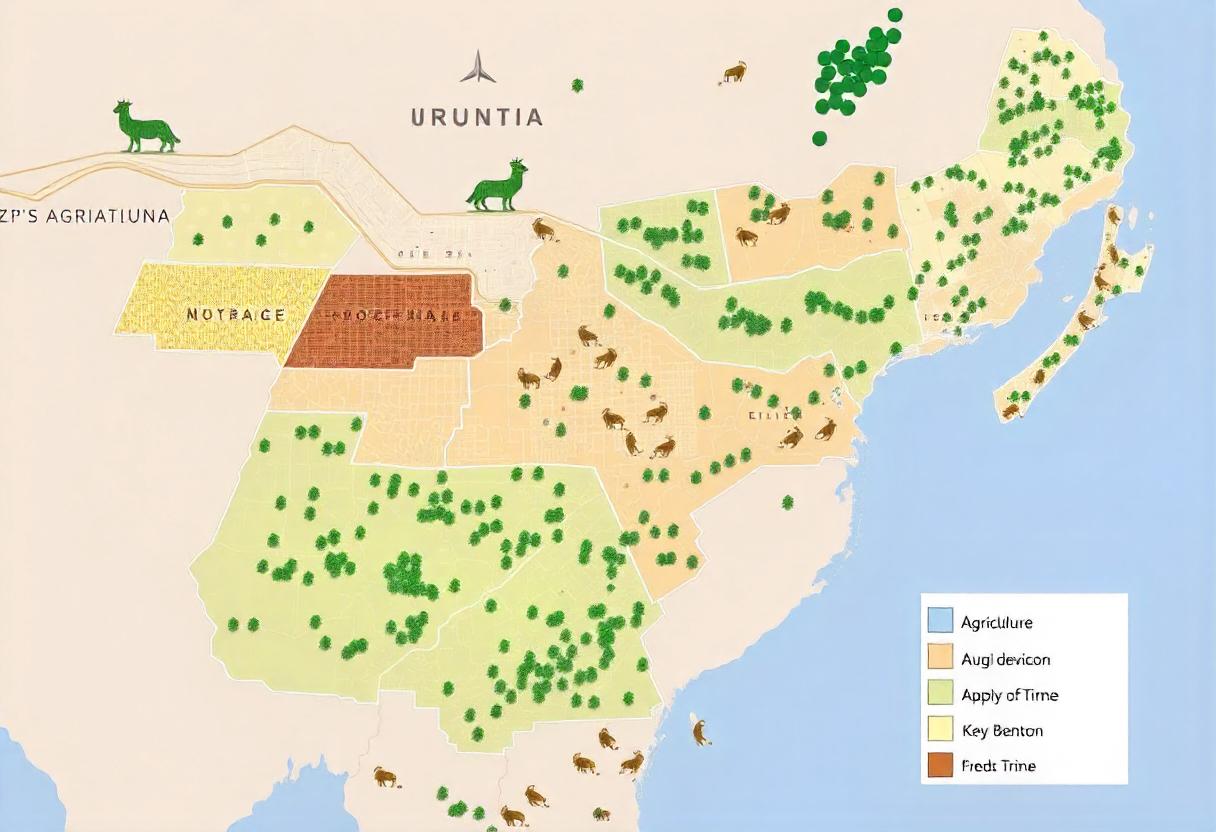
Agriculture zones, also known as agricultural zones or farming zones, are regions classified based on specific climatic, geographical, and soil characteristics that influence agricultural practices. These zones play a crucial role in determining the types of crops that can be successfully grown and the best farming practices for each region.
Types of Agriculture Zones
- Climate Zones: Climate is a fundamental factor in classifying agriculture zones. Different climates—such as temperate, tropical, arid, and Mediterranean—affect temperature, rainfall, and humidity levels. These climatic conditions dictate the types of crops that can be cultivated. For instance, tropical zones with high temperatures and rainfall are ideal for crops like bananas and sugarcane, while temperate zones with moderate temperatures are suited for crops such as wheat and potatoes.
- Soil Zones: Soil quality and type significantly impact agricultural productivity. Soil zones are categorized based on characteristics like soil texture, nutrient content, and drainage capacity. For example, loamy soils, which are a mix of sand, silt, and clay, are often ideal for a wide range of crops due to their balanced drainage and nutrient-holding capacity. Conversely, sandy soils with poor water retention may require additional irrigation and fertilization to support crop growth.
- Topographic Zones: The topography of a region, including factors like elevation and slope, also influences agriculture zones. High-altitude areas may have cooler temperatures and shorter growing seasons, which can be suitable for crops like barley and certain vegetables. Conversely, lowland areas with gentle slopes may be more conducive to large-scale crop cultivation and mechanized farming.
Importance of Agriculture Zones
- Crop Selection: Understanding agriculture zones helps farmers select crops that are best suited to their local conditions, maximizing yield and minimizing risks. For example, growing drought-resistant crops in arid zones or frost-tolerant varieties in cooler climates can enhance productivity and sustainability.
- Resource Management: Agriculture zones guide resource management, including water usage and soil conservation practices. By tailoring farming practices to the specific characteristics of their zone, farmers can optimize water use, reduce soil erosion, and improve overall efficiency.
- Pest and Disease Management: Different agriculture zones may have varying pest and disease pressures. Identifying these zones helps in implementing targeted pest management strategies and selecting disease-resistant crop varieties, which can reduce crop losses and improve farm sustainability.
- Climate Adaptation: As climate change impacts agricultural systems worldwide, understanding agriculture zones becomes increasingly important for adapting to changing conditions. Farmers can use this knowledge to adjust their practices, select more resilient crops, and implement conservation strategies to cope with new challenges.
Mapping Agriculture Zones
Mapping agriculture zones involves analyzing various factors such as climate data, soil surveys, and topographic maps. Geographic Information Systems (GIS) and remote sensing technologies are often used to create detailed and accurate maps that guide agricultural planning and decision-making.
Agriculture zones are dynamic and can evolve over time due to changes in climate, land use, and technological advancements. Continuous research and monitoring are essential for maintaining up-to-date information and ensuring that farming practices remain effective and sustainable in different agricultural regions.